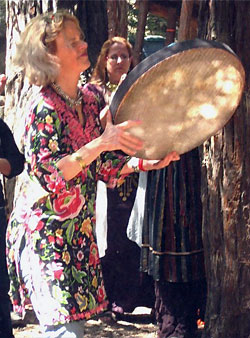Iranian Cultural Facts
Did you know . . . ?
Iran
The name 'Iran' means 'land of the Aryans', and not to be confused with Arabs or Turks, Iranians are an Aryan race. 'Persia' is the name given to the more than 5,000 year old culture of Iran by the ancient Greeks, and 'Iran' became the official name of the country in 1932. Both names 'Persia' and 'Iran' are for the most part interchangeable, as are the names 'America' and 'the United Sates'.
Language
While sharing the same alphabet with Arabic with the addition of several letters, Persian language, or Farsi, is a member of the Indo-European family of languages, along with Spanish, Italian, French, German, English, Russian, Greek and Armenian. Speakers of Hebrew and Arabic, which are Semitic languages, have racial and historical backgrounds which are entirely different from Iranians, and Turkish people have yet another heritage and language. While there are many words and cultural elements which are shared by all these groups, each one is deeply distinct from the other. Many languages and ethnic groups are present in Iran, primarily forms of Turkish, several members of the Iranian linguistic family including Kurdish, and Persian dialects.
Religion
A monotheistic religion called Zoroastrianism existed in Iran for possibly thousands of years before the introduction of Christianity. From the book of Matthew in the New Testament, we hear of the earliest visitors to the cradle of the infant Jesus, the three Wise Men from the East who had seen his star and came to worship him. The Greek word translated 'Wise Men' is magoi, which enables us to identify these dignified travelers as Zoroastrian priests. This same Greek word is the root of the words 'magic' and 'magician'.
While Zoroastrians still live in Iran today, the majority of Iranians are Shiite Muslims, and other religious groups with the most active presence are Jews, Christians, and Sunni Muslims.
Persian Empire
The Achaemenid Persian Empire (550–330 BC) was the largest empire of the ancient world, reaching from northern Greece to India, from the Caucasus to Pakistan and into North Africa.
The first known declaration of human rights was written in 539 BC by Cyrus the Great, when he freed the Jewish slaves of Babylon and helped them return to Jerusalem. A copy of this declaration is mounted over the door of one of the most important auditoriums at the United Nations in New York City.
'Greece did not begin civilization - it inherited far more civilization than it began; it was the heir of three millennia of arts and sciences brought to its cities from the Near East by the fortunes of trade and war. In studying and honoring the Near East, we shall be acknowledging a debt long due to the real founders of European and American civilization.'
- Will Durant, world historian, The Story of Civilization
Vol. 1, Our Oriental Heritage, 1935, Book One, p. 116.
Mail system
Invented by the ancient Persians, the first mail system was supported by a road which stretched approximately 1,000 miles from the center of government in what is today southwest Iran to the Mediterranean Sea.
According to the ancient Greek historian Herodotus: 'There is nothing in the world which travels faster than these Persian couriers. The whole idea is a Persian invention, and works like this: riders are stationed along the road, equal in number to the number of days the journey takes - a man and a horse for each day. Nothing stops these couriers from covering their allotted range in the quickest possible time. Neither snow, rain, heat nor darkness.'
- Herodotus (5th century BC), The Histories, Book VIII.98
This system and these very words were adopted during the early days of the United States mail system, in particular the 'Pony Express' of the late 19th century. A translation from Herodotus may sound familiar to some of you: 'Neither snow nor rain nor heat nor gloom of night stays these couriers from the swift completion of their appointed rounds.'
- George Palmer, Harvard University
Science
The earliest 'green builders' were the Iranians, who have made countless contributions to the world through scientific advancements. To mention only a few of their early innovations:
batteries
Dating from 250 BC, the earliest batteries to be found were unearthed near Ctesiphon, an early capital of Iran near Baghdad in what is now Iraq. They were small enough to fit into a human hand, made from clay, and with the use of citric acid and vinegar were able to generate up to 2.0 volts of power.
- David Down, biblical archaeologist, Creation, March 1994, p.10
windmill
'Most modern authors on the history of technology agree on the Persian origin of the windmill.'
- Hans Wulff, The Traditional Crafts of Persia, 1966 p. 284
It is believed that windmills made their way from Persia to Europe between the 7th and 11th centuries.
qanat
Meaning roughly 'underground water channel', qanats are a truly extraordinary development in the history of human civilization. While there are many kinds of terrain and weather conditions in Iran, the largest areas are desert. These underground channels are constructed in such a way that water from faraway mountain areas can support settlements and lush walled gardens in the middle of the desert. In order to thrive in such a harsh and dry climate, 'Persian imagination and ingenuity is unrivalled in making the best use of water in the desert and in this the country's contribution to the world's technology is unique.'
- Ronald W Ferrier, The Arts of Persia, 1989, p.115
'The qanat works of Iran were built on a scale that rivaled the great aqueducts of the Roman Empire. Whereas the Roman Aqueducts now are only a historical curiosity, the Iranian system is still in use after 3,000 years and has continually been expanded. There are 22,000 qanat units in Iran, comprising more than 170,000 miles of underground channels.
'Other regions of the world with so little rainfall are barren of attempts at agriculture. Yet Iran is a farming country that not only grows crops for its own food but also manages to produce crops for export . . . It has achieved this remarkable accomplishment by developing an ingenious system for tapping underground water.'
Hans Wulff, Scientific American, April 1968, p. 94 - 95
Qanats have been introduced in surrounding regions, including Europe during the Islamic period of Spain from the 8th to the 16th centuries. It is remarkable that of the four early great civilizations in the vicinity, each of them except for Iran was supported with ample water supply from large rivers; Egypt on the Nile, Mesopotamia between the Tigris and Euphrates, and the Indus Valley Civilization on the River Sind. Iran's great civilization has been supported by the genius of Iranians.
gardens
Qanat technology made possible the establishment of stunning garden environments in the middle of deserts. Iranians have always held a special reverence for nature, and especially flower gardens. Typically lined with cypress and other trees and arranged with flowers and fountains, pools and running water, the English word 'paradise' most likely is derived from the Persian word for these gardens, pardis.
badgir
The earliest air conditioning system was also invented by Iranians thousands of years ago in order to cool home interiors and make life in the desert tolerable. Badgir, a word meaning 'catch wind', is an ingeniously simple idea which has attractive possibilities for our current era. A badgir resembles a chimney, but rather than channeling smoke up and out, air is cooled as it is funneled from the top of the badgir down into the living quarters. The most effective use of the badgir is to locate a pool of water with a fountain beneath it, which cools the air to an even more significant degree.
yakhchal
Yet another astounding strategy for living in a desert climate which was engineered by the ancient Persians is the earliest refrigeration system. By 400 BC Iranians were able to produce ice and frozen delicacies in the most brutal heat of the summer. Often built as a whole system together with qanats and badgirs, yakhchal means 'ice pit'. Shallow troughs for water were constructed next to adjacent walls in a specific configuration which channeled winds, causing the water to freeze at nights in the extreme desert climate. This together with winter ice carried from the mountains was stored in the subterranean storage space under the conical structure of the yakhchal. The circular walls were insulated to withstand high temperatures with a thickness of at least least 6 ½ feet at the base. These walls are not only resistant to heat transfer, but also completely impervious to water. The material used to build them is made of a mixture of ash, goat hair, lime, egg whites, clay, and sand in specific proportions.

